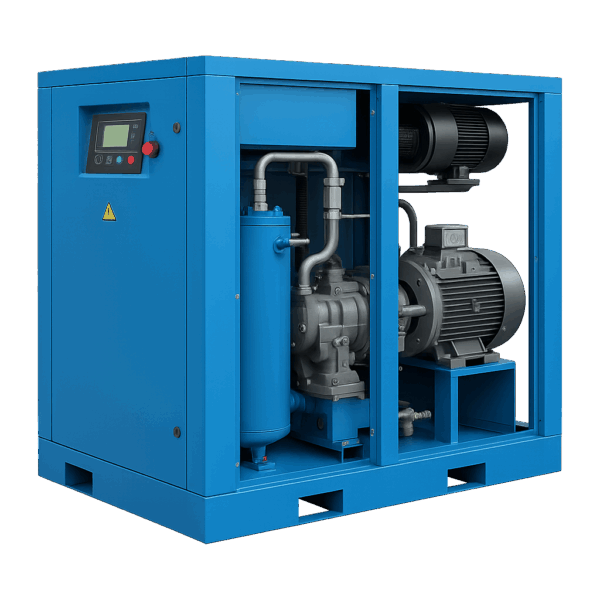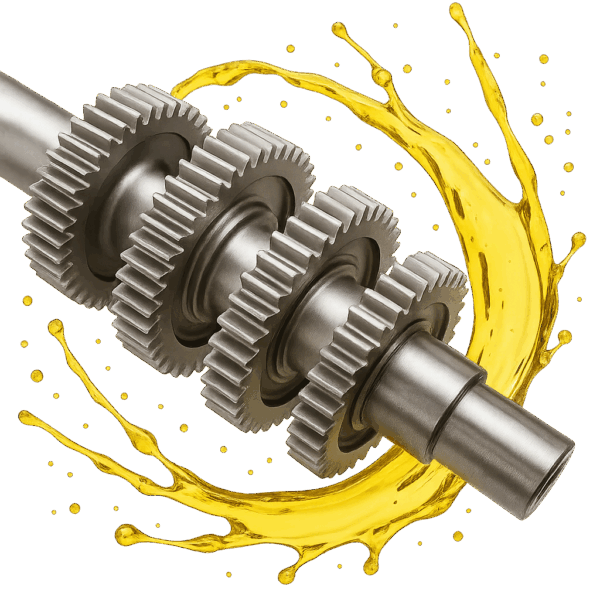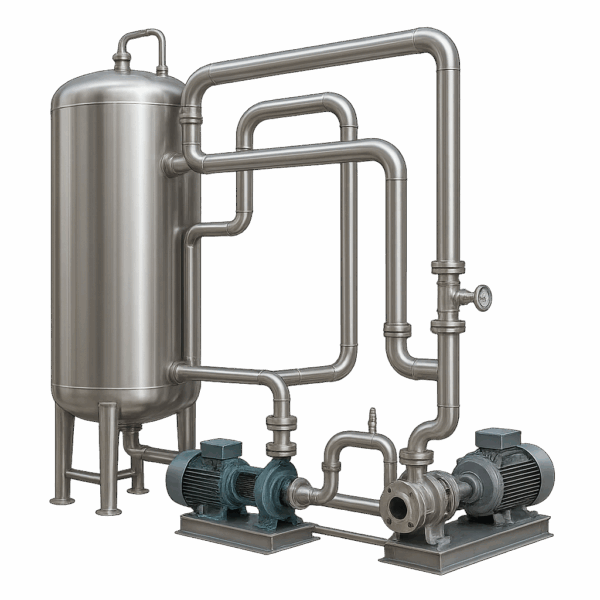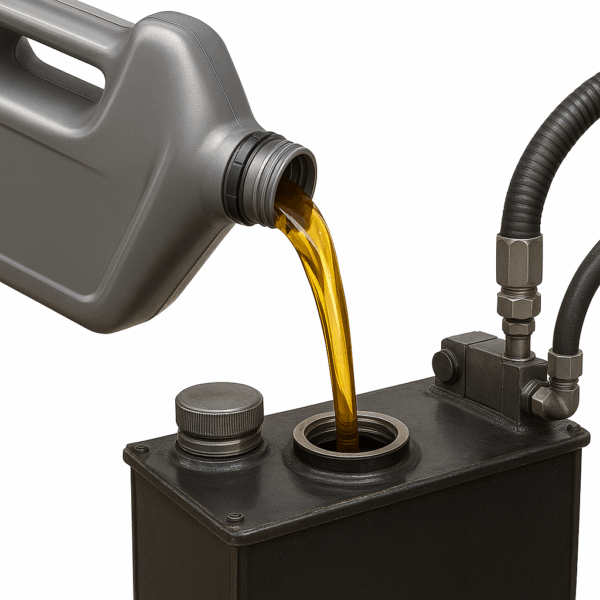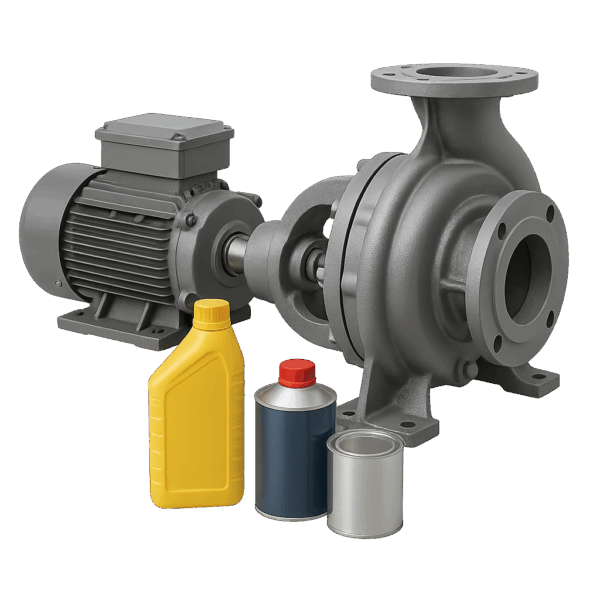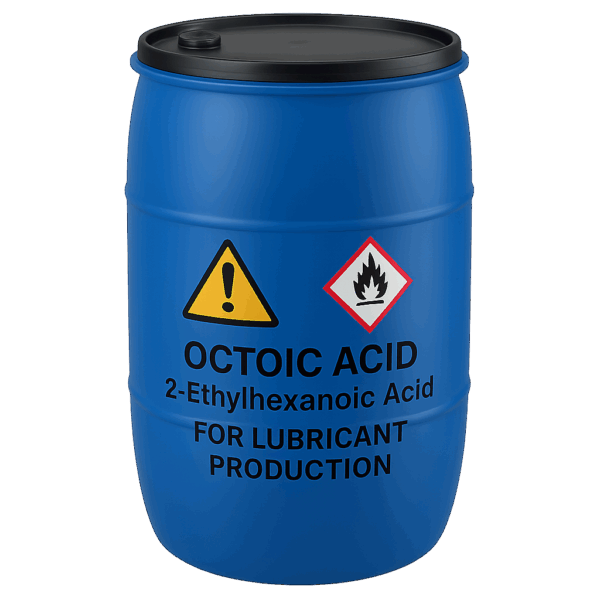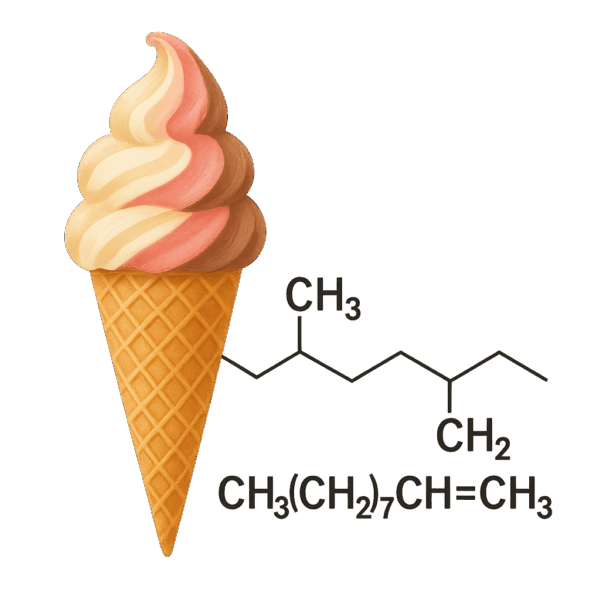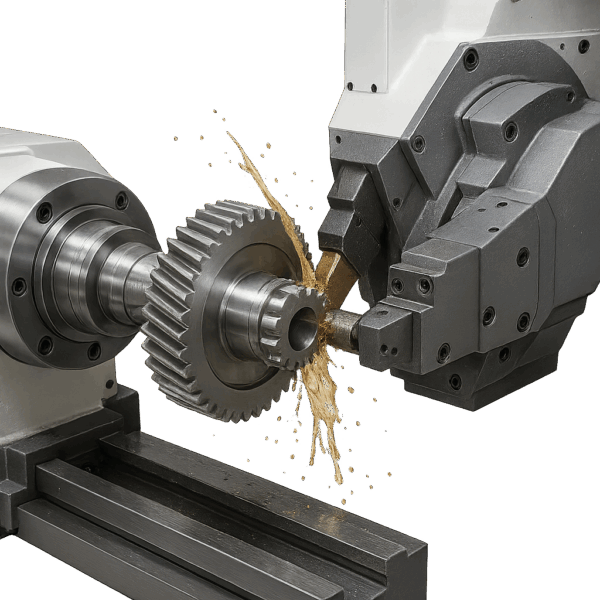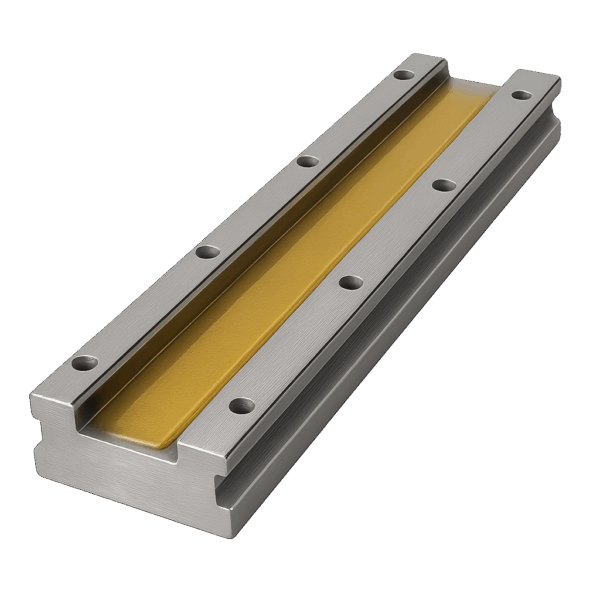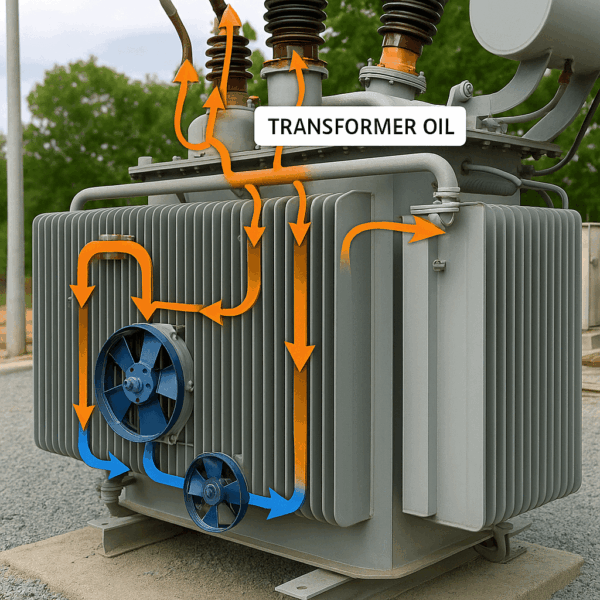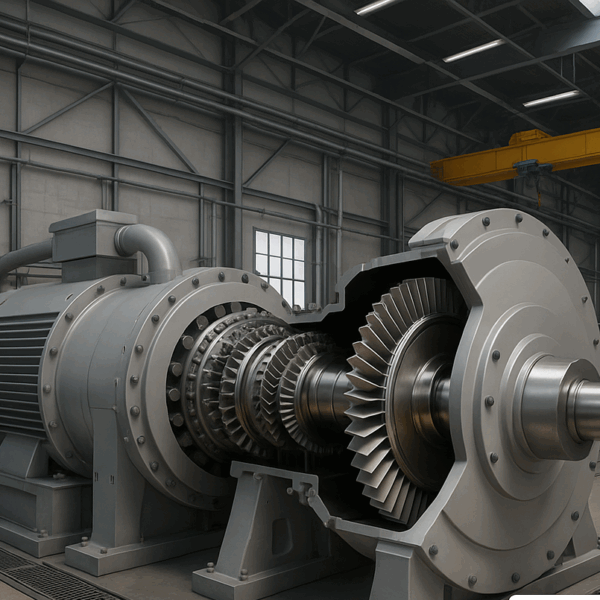O
Air Compressor Oil
A compressor oil is used to lubricate both the working parts and the pressurized spaces in a compressor. The purpose of the lubricant in the pressurized section is not only to reduce friction and wear but also to improve sealing of the pressurized spaces and to provide cooling.
For Reciprocating Compressors a lubricant is required for the bearings, pistons, rings, cylinders and valves that has enough antiwear additives and suitable viscosity .The pistons and valves reach temperatures of 2200C to 3000C and the oil film on the surfaces of these components must not form soft and hard carbon.
Good demulsibility properties are also necessary to aide water/oil separation as the oil containing air is cooled and the water vapor condenses.
Circulation Oil
Circulating Oil is premium quality, solvent refined, high viscosity index and mineral oils specially chosen for their ability because they play a critical role in lubricating and protecting key components, such as bearings and gears, in systems where a continuous flow of lubricant is required. This continuous flow ensures that moving parts are consistently coated with oil, reducing friction, wear, and heat generation.
Circulating systems need to operate in varying conditions, so it is vital you have a lubrication solution that works consistently no matter the circumstance so they must have Excellent water-separating properties to minimize the formation of emulsions , Good oxidation resistance , good Protection against rust and corrosion , enough foam resistance. Circulation oil has the ability to rapidly separate from water, prevention of emulsion and sludge build up, which hampers lubricating efficiency.
Heat Transfer Oil
- Function:
They circulate through a closed loop system, absorbing heat from a heat source and transferring it to the desired process area, enabling indirect heating. Heat transfer oils are Formulated to promote energy efficient heat transfer performance , to control Oxidation and creating thermal stability that helps resist harmful sludge and coke formation and contributes to long oil service life . Low temperature fluidity assists rapid system start-up , Low vapour pressure at elevated temperatures helps minimise evaporation, vapour lock and pump cavitation and Efficient low pressure operation avoids the need for expensive high pressure pipe-work and heat exchanger systems.
Heat transfer oils have many applications such as used in various industrial processes like plastic molding, chemical reactions, food processing, asphalt production, metal heat treating , food processing , petroleum and wax processing where precise temperature control is crucial.
Hydraulic Oil
Although it is commonly used in the transfer of power, hydraulic fluid can act as a sealant, coolant and lubricant within machinery and equipment. Hydraulic oil can be used for Forklift Trucks ,Log Splitters ,Automotive Lifts ,Wright Standers . Snow Ploughs (Snow Plows) ,Skid Steers (Skid-steer Loader and Skidsteer) ,Aircraft (aviation) ,Air Tools ,Tractors ,Cruise Ships and the Marine Industry. Superior hydraulic oils are available in a wide range of ISO and SAE grades to meet these and many other critical machinery challenges, such as high speed , high pressure , high temperature , very low temperature in winter , turbine – grade temperature and those used for food processing and packaging are available .for a hydraulic oil to be useful it needs to have the below properties:
- Non-compressible
- Thermally stable, within a range of operating temperatures
- Fire resistance
- Non-corrosive & Anti-wearing to its system
- Low tendency to cavitate
- Tolerance to water (resistance to water contamination)
- Total water rejection
- Constant viscosity, regardless of temperature & Long Life
Industrial Gear Oil
Even when torque is transferred, gears will have sliding and rolling contact, leading to frictional losses and heat generation. Therefore, the lubricants selected for these applications must be able to significantly reduce these frictional losses and cool the gears. Industrial gear oils can be formulated using mineral base oils or synthetic base oils.
Various additives are incorporated into gear oils to enhance their performance characteristics and the viscosity of gear oil is a critical parameter that determines its flow characteristics and lubricating ability. The lubricant must also have a high viscosity at operating temperature such that the formed film can sufficiently support the load while cooling the gears. Another point to consider is the pour point of gear oil ,that refers to the temperature at which the oil begins to solidify and lose its flow properties. Available industrial gear oils can be classified into four main types are Synthetic Gear Oil, Rust and oxidation inhibited (R&O) gear oils, Extreme pressure (EP) gear oils , Compounded gear oils.
Octoic Acid
It is a carboxylic acid that is widely used to prepare lipophilic metal derivatives that are soluble in nonpolar organic solvents. Industrially, 2-EHA is manufactured using propylene, often generated from fossil fuels and other sources which are renewable. 2-Ethylhexanoic acid ( Octoic Acid )is used to produce corrosion inhibitors for lubricants and automotive coolants. It also serves as wood preservatives and makes lubricant additives as well as synthetic lubricants. 2-Ethylhexanoic acid is commonly used in esters in Polyvinyl butyral (PVB) film plasticizers and as a raw material for polyesters applied in synthetic oils.
Oleic Acid
Oleic acid is In olive oil, palm oil, peanut oil and sunflower oil, oleic acid is the principal acid obtained by saponification. Like all other fatty acids, oleic acid does not occur in the free state and need to be processed. There are two crystalline forms of oleic acid one with the melting point of 13.4 degrees C, and the other one has a melting point of 16.3 degrees C. Oleic acid is a significant component of soap as an emulsifying agent. It is also used as an emollient. Pharmaceuticals use small quantities of oleic acid as an excipient. We can also use oleic acid as an emulsifying or dissolving agent in aerosol products .Firms also use oleic acid as a soldering flux in stained glass work for attaching a lead.
Process Oil
Application Of Process Oil
- Polymers , elastomer and Tires: Process oils are used to improve the workability of elastomers without changing their physical properties. This helps ensure the quality of the final product.
- Optical cables: Process oils are used in oil-based gels that flood rigid tubes containing optical fibers.
- Textiles: Process oils are used in the manufacturing of textiles.
- Metalworking: Process oils are used in metalworking.
- Asphaltic sheets, inks, and paints: Process oils are used in the manufacturing of asphaltic sheets, inks, and paints.
- Defoamer : In oil based defoamer formulations, the oil can comprise up to 90% of the formulation. It functions as a carrier fluid, in order both to spread over the surface of the aqueous system to neutralise the surfactant molecules and to transport the hydrophobic ingredients of the defoamer to the double layers of surfactant molecule that stabilise the foam bubbles in order to destroy them.
Slideway Industrial Oil
Dimensional accuracy and surface quality of the workpieces to be machined so Slideway Oil must be carefully formulated somehow hat can provide controlled frictional properties for high precision machining, compatibility with aqueous metal working fluids and corrosion protection of parts and equipment.
stick-slip is a big problem in machining , The cause of stick-slip is frictional vibration resulting from the constantly changing friction between the machine-tool toolholder – the tool and the work-piece – or slide and its slideway. The same applies to linear guide systems. Special slideway oils and their additives assist the formation of lubricant films on the surfaces and reduce the stick-slip problem at its minimum possible amount . Slideway Oils have been developed with adhesiveness which prevents lubricants from being washed away from slideways. They are designed for use with combinations of cast iron, steel and non-metallic way material and can be used for lubrication of ball screws, linear guides, headstocks, translating screws.
Transformer Oil
The transformer coils can be designed with copper that carries a high current so that the coils become hot. Since the coil is an excellent heat conductor, transformer oil can be used to reduce the temperature of the copper coil preventing it from burning. Two types of oils are available Paraffinic oil and Naphthenic oil:
- Paraffinic oil is a mineral insulating oil derived from special crudes and contains a substantial amount of n-paraffin. Paraffin oil has less oxidation and has a boiling point of about 530°C. Due to high wax content, the pour point is high compared to naphthenic oil. Oxidation products are insoluble within the oil.
- Naphthenic oil is a mineral insulating oil derived from particular crudes which contain very low n-paraffin. Naphthenic oil has a boiling point of about approximately 425°C. This oil is comparatively more readily corroded than paraffinic oil. Due to less wax content, the pour point is less compared to paraffinic oil. The oxidation products are soluble within the oil.
Turbine Oil
Turbine oil has multiple industrial applications. It lubricates air and gas compressors, as well as all types of hydraulic devices, bearings, reduction equipment, and turbine runner bosses. In addition to its advanced lubrication properties, turbine oil provides efficient cooling and protects the system from sludge, rust, and corrosion. Turbine oil is often classified according to the turbine type, such as gas turbine oil, steam turbine oil, etc. turbine oils consist of base oil and additives, The base oil makes up 97% or more of the turbine oil. It can be synthetic, semi-synthetic, or mineral.
Additives typically make up only 1% of turbine oil. Although far smaller in quantity, they play a fundamental role in the turbine oil formula. Advanced additives are added to the oil to minimize foaming, prevent rust and oxidation, separate water, etc. Turbine oil is exposed to high temperatures and pressures. Its advanced formula helps it maintain good properties to ensure the continuous lubrication and protection of the turbine. Some of them are corrosion resistance, enhanced anti-oxidation, anti-foaming features, proper viscosity, excellent anti-wear property and high stability

